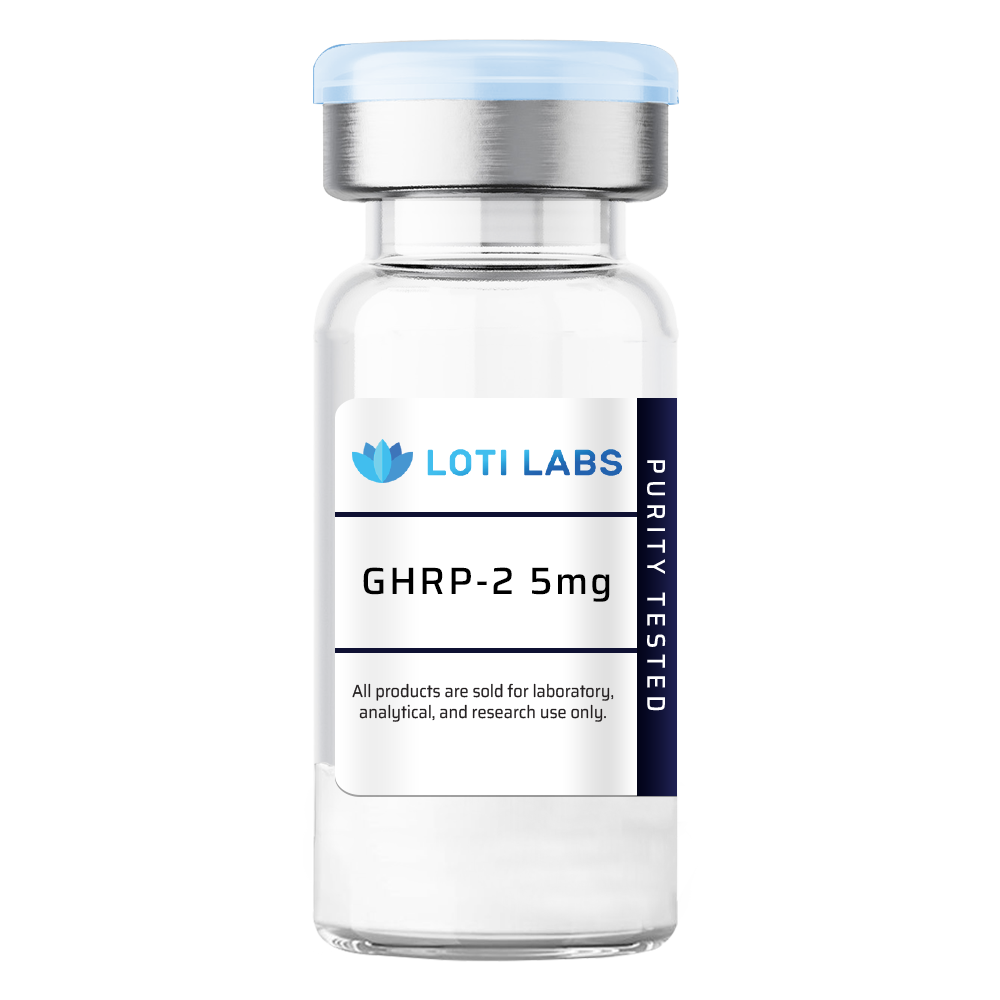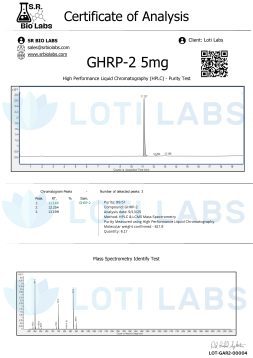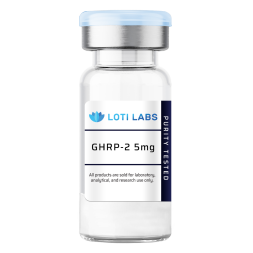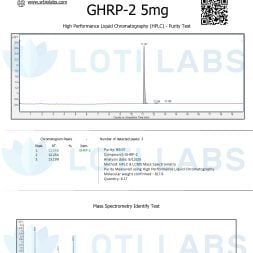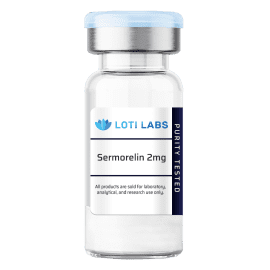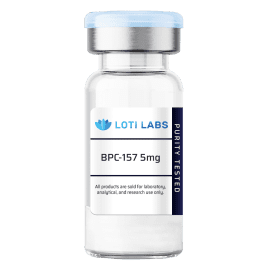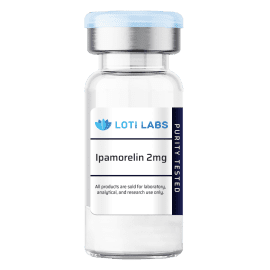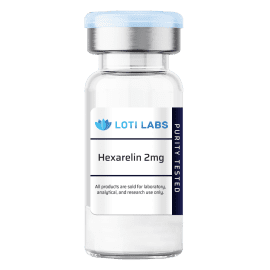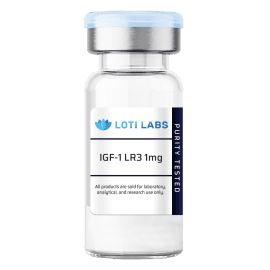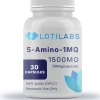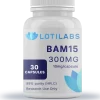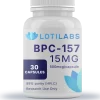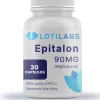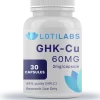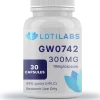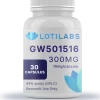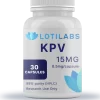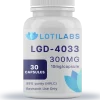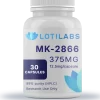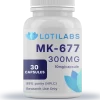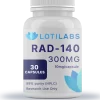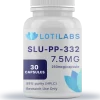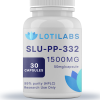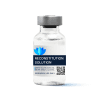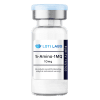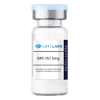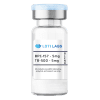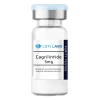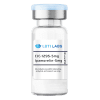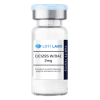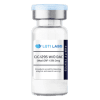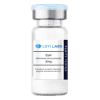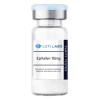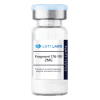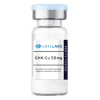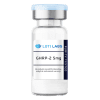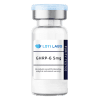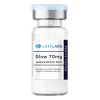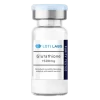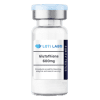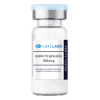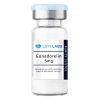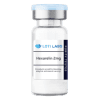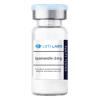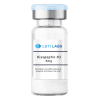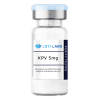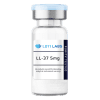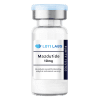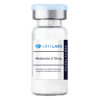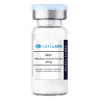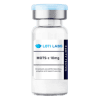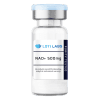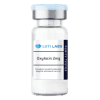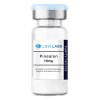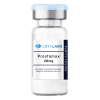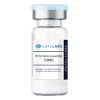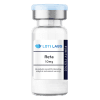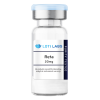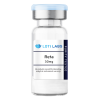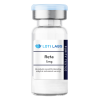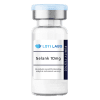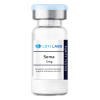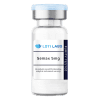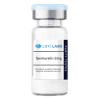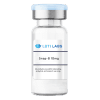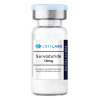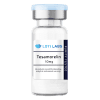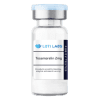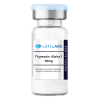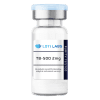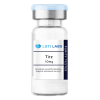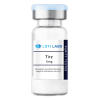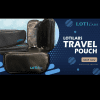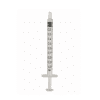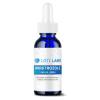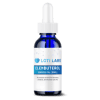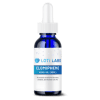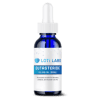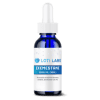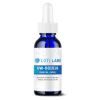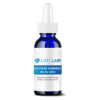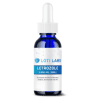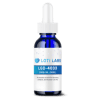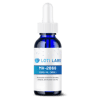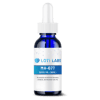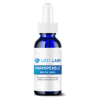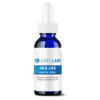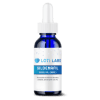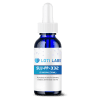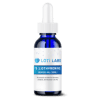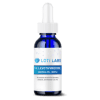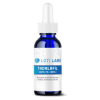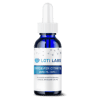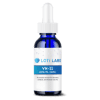GHRP-2 5mg
$29.99
You save
This product is intended as a research chemical only. This designation allows the use of this chemical strictly for in-vitro laboratory testing and experimentation. Human or veterinary use is strictly forbidden. This product is not a drug, food or cosmetic and may not be misbranded, mislabeled or misused as such.

Buy GHRP-2 at Loti Labs: Research Peptides for Science
Growth hormone releasing peptide 2 is a research tool for scientists studying endocrine pathways and cellular signaling mechanisms. This synthetic peptide has been popular in the lab due to its strong activity as a ghrelin receptor agonist and ability to stimulate gh release through well defined molecular pathways. When you buy ghrp 2 for research, you get a compound that has shown consistent results across various research applications, from growth hormone deficiency models to metabolic studies.
Understanding the molecular structure, mechanism of action and research applications of GHRP-2 allows scientists to design better experimental protocols and ensure proper handling and storage procedures to maintain peptide integrity throughout their studies.
Molecular Structure of GHRP-2
GHRP-2, a growth hormone secretagogue and non glycosylated polypeptide chain, has a defined molecular architecture that underlies its biological activity. The synthetic peptide has the amino acid sequence H-D-Ala-D-2-Nal-Ala-Trp-D-Phe-Lys-NH2, with natural and modified amino acids that contribute to its stability and receptor binding properties.
Key Molecular Characteristics:
| Property | Value |
|---|---|
| Molecular formula | C45H55N9O6 |
| Molecular Weight | 817.9 g/mol |
| Molecular mass | 817.9 Da |
| PubChem CID | 16133411 |
| CAS Number | 158861-67-7 |
The D-amino acids at specific positions enhance the peptide’s resistance to enzymatic degradation and the C-terminal amide group (Lys-NH2) contributes to its biological activity. This structure is one of the most potent in the growth hormone releasing peptide family and is more stable than the natural hormone ghrelin.
Mechanism of Action
GHRP-2 binds to the growth hormone secretagogue receptor (GHS-R1α) primarily located in the pituitary gland and hypothalamus. Research shows this binding activates G-protein coupled signaling pathways that triggers calcium influx through voltage dependent channels and stimulates pulsatile growth hormone secretion from pituitary somatotrophs.
The peptide works through several interconnected cellular processes:
Primary Signaling Pathways:
- Ghrelin receptors activation leading to increased intracellular calcium
- Enhanced protein kinase C (PKC) pathway activity* Modulation of cAMP-dependent signaling in certain models
- Direct stimulation of gh releasing mechanisms independent of GHRH pathways
Studies in the lab show that GHRP-2 produces antinociceptive effects at the supraspinal level, suggesting additional receptor interactions beyond the primary growth hormone secretagogue receptor. The peptide is effective in stimulating gh release even in gh deficiency models where traditional GHRH pathways are impaired.
Research shows that somatostatin can modulate GHRP-2’s effects, indicating the peptide’s integration in existing hormonal regulation systems. This interaction makes the compound an investigational drug for understanding complex endocrine feedback mechanisms.
Research Studies and Applications
Scientific studies have investigated GHRP-2 across multiple research areas, providing valuable information on growth hormone physiology and metabolic regulation. These studies demonstrate the peptide’s use as a research tool for studying various biological processes.
Growth Hormone Deficiency Research
Studies in lit/lit mice, which have defective GHRH receptors, showed significant results for GHRP-2. 10 mcg of GHRP-2 produced gh release of 9.3 ± 1.5 ng/mL compared to 1.04 ± 1.15 ng/mL in control groups (p<0.001). This shows the peptide can bypass traditional GHRH-dependent pathways, making it useful for studying alternative growth hormone regulatory mechanisms.
Metabolic and Growth Performance Studies
Animal models have been used to study GHRP-2’s effects on metabolism and growth performance. Studies in swine showed peptide administration increased average daily gain by 22.35% and feed efficiency by 20.64%. These results provide insight into growth hormone signaling and metabolic efficiency, giving researchers tools to study muscle growth mechanisms and energy utilization pathways.
Appetite and Food Intake Research
As a ghrelin receptor agonist, GHRP-2 has been used to study appetite regulation mechanisms. Research showed the compound increased food intake by 35-36% compared to placebo controls in experimental models. These studies help scientists understand the complex relationship between the hormone ghrelin, growth hormone pathways and feeding behavior regulation.
Additional Research Applications
GHRP-2 has been studied in other research areas:
- Cardiovascular protection studies on myocardial signaling pathways* Immune system modulation research on anti-inflammatory properties
- Muscle growth and tissue development studies
- Insulin like growth factor pathway research
Storage and Handling Guidelines
Proper storage is critical to maintaining GHRP-2’s integrity and biological activity throughout research studies. The lyophilized growth hormone releasing peptide requires specific conditions to prevent degradation and ensure experimental reproducibility.
Storage Recommendations
Long Term Storage:
- Store lyophilized peptides desiccated below -18°C
- Keep temperature consistent to prevent freeze thaw cycles
- Allow vials to equilibrate to room temperature before opening
- Protect from light and moisture
Reconstituted Solutions:
- Stable for 3+ weeks at +4°C
- 3-4 months at -20°C
- Add carrier protein (0.1% HSA or BSA) for extended storage
- Use aqueous solutions or other aqueous solutions as per experimental design
Handling Protocols
Research shows proper handling techniques impact peptide stability and experimental outcomes. Scientists should avoid repeated freeze-thaw cycles which can denature the synthetic peptides and reduce biological activity. When preparing stock solutions, researchers should consider their experimental design and select appropriate solvents and concentrations.
The peptide is stable during standard shipping at room temperature, no special refrigeration required during transport. This makes it convenient for research labs to procure the product while maintaining product integrity.
Why Buy from Loti Labs
Loti Labs provides researchers with high quality GHRP-2 for laboratory research and experimental studies. We guarantee that researchers receive peptides meeting the strict requirements for reproducible research results.
Product Specifications
Purity:
- 98% verified by analytical testing
- 5mg vials of lyophilized powder
- Glass vial packaging for optimal stability
- Ready to reconstitute in lab
Quality Assurance:
- Every batch is tested by third party
- rp hplc analysis for identity and purity
- SDS-PAGE analysis for additional verification
- Consistent quality across all production batches
Research Support
Our technical support team can assist with:
- Storage recommendations
- Experimental design
- Product specifications and analytical data
Ordering Benefits
Researchers buying from Loti Labs get:
- Competitive pricing
- Fast order fulfillment and shipping* Product documentation
- Ongoing supply for research projects
Research Use Only and Regulatory Compliance
All products from Loti Labs including GHRP-2 are designated for research use only. This classification ensures compliance with regulations governing research chemicals and protects both suppliers and researchers from misuse.
Research Use Only Guidelines
Allowed Uses:
- In-vitro laboratory testing and experimentation
- Cellular and molecular research studies
- Animal model research (where applicable)
- Academic and commercial research projects
Prohibited Uses:
- Human therapeutic or diagnostic use
- Veterinary therapeutic use
- Food or cosmetic product use
- Human consumption or administration
This is the current regulatory status for synthetic peptides in research settings. Researchers must ensure their experimental protocols comply with institutional guidelines and regulations for research chemicals.
Safety and Handling
Research facilities should follow standard laboratory safety protocols when working with synthetic peptides. Although GHRP-2 is stable, researchers should follow lab safety procedures, including personal protective equipment and waste disposal.
The compound is an investigational drug substance and requires documentation of use, storage and disposal according to institutional and regulatory requirements.
Shipping and Customer Service
Loti Labs has efficient shipping protocols to meet the time-sensitive needs of research labs while maintaining product integrity during transport.
Shipping Schedule
Standard Shipping:
- Same day shipping for orders placed before 1pm EST (Monday-Friday)
- Next business day shipping for orders placed after 1pm EST or weekends
- No refrigeration required during standard shipping periods
- Room temperature stability maintains peptide integrity during transport
Satisfaction Guarantee
Our commitment to research excellence includes a 30-day satisfaction guarantee:
- 30-day money back guarantee on all purchases
- Full refund for unopened products returned within guarantee period
- Quality assurance support for product related issues
- Technical support for research protocol questions* 98% minimum purity for all batches
- Molecular identity confirmed by multiple methods
- Stability testing under various conditions
- Contamination screening for common lab contaminants
Third Party Verification
Independent lab testing for added quality assurance:
- Unbiased verification of product specifications
- Molecular formula and structure confirmation
- Storage stability validation
- Documentation for research use
This thorough testing ensures researchers get peptides with consistent quality characteristics for reproducible results and data.
Summary
GHRP-2 is a research tool for scientists studying growth hormone pathways, metabolic regulation and cellular signaling. Its well defined molecular structure and mechanism of action makes it a reliable compound for various experimental uses from basic endocrine research to complex metabolic studies.
When you buy ghrp 2 from Loti Labs you get high purity synthetic peptides backed by quality assurance and technical support. Our commitment to research excellence means you get products that meet the strict requirements for successful results.
With quality control, proper storage and regulatory compliance GHRP-2 from Loti Labs is the best choice for research labs looking for reliable peptide suppliers. Whether you’re investigating growth hormone deficiency models, metabolic pathways or appetite regulation mechanisms researchers can rely on product quality and performance.
Ready to advance your research into growth hormone physiology and related pathways? Contact our technical support team to discuss your research needs and how our premium peptides can help your protocols.
References
- Zeng, P., Li, S., Zheng, Y. H., Liu, F. Y., Wang, J. L., Zhang, D. L., & Wei, J. (2014). Ghrelin receptor agonist, GHRP-2, produces antinociceptive effects at the supraspinal level via the opioid receptor in mice. Peptides, 55, 103–109.
- Phung, L. T., Inoue, H., Nou, V., Lee, H. G., Vega, R. A., Matsunaga, N., Hidaka, S., Kuwayama, H., & Hidari, H. (2000). The effects of growth hormone-releasing peptide-2 (GHRP-2) on the release of growth hormone and growth performance in swine. Domestic Animal Endocrinology, 18(3), 279–291.
- Additional scientific literature on GHRP-2’s mechanism, storage, and research applications as cited throughout the article, including peer-reviewed journals and reputable peptide research sources.
Note: All references are provided for research use only and support the scientific context of GHRP-2 as a research peptide.
For more information on GHRP-2 peptide please visit Wikipedia.
| Weight | 0.0099 lbs |
| Appearance | Lyophilized Powder |
| Amino Sequence | H-D-Ala-D-2-Nal-Ala-Trp-D-Phe-Lys-NH2 |
| Solubility | 100 µg/mL sterile diluent |
| Source | Biosynthetic production |
| Stability | Lyophilized protein is to be stored at -20°C. It is recommended to divide the remaining reconstituted peptide into multiple vials so as to avoid a cycle of freezing and thawing. Reconstituted protein can be stored at 4°C. |
| Molar Mass | 817.9 g/mol |
| CAS Number | 158861-67-7 |
| PubChem | CID 6918245 |
| Molecular Formula | C45H55N9O6 |
| MG | 5mg |
| Terms | This product is sold for research/laboratory usage only. No other uses are permited. |
| Weight | 0.03125 lbs |
|---|
